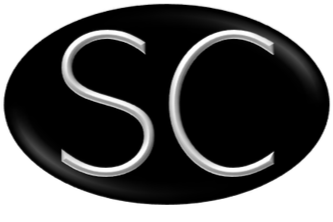4 Tips to Help Move Your Resume to the Call Back Stack
Digging this article out of the crate with some updates. Resume Writing isn't rocket science, unless of course, you’re a rocket scientist. That said, it can actually be simpler than you think!
It’s important to remember that not all resume advice is good advice and not all resume styles apply to all professions. For this post, we’ll be primarily focusing on resumes as they pertain to results-driven roles within an organization. The problem solvers, if you will.
Many resumes read like job descriptions. They tell a recruiter what you were supposed to do but not what you did. The truth is, some of those folks may get a second look, depending on the overall talent of the candidate pool. You, however, want to ensure your resume stands out from those that can just "do the job." You want to show that you’re absolutely killing it. Let’s discuss how you can move from pile of “meh” to the “get that person on the phone RIGHT NOW” short stack.
Organizations have challenges. It’s why they hire. Job descriptions are their way of telling you what those challenges are. We can debate all day on how effectively job descriptions are written (there is actually more that goes into it than people think,but that’s a topic for another time), but it’s the equivalent of a company saying, “hey Joe Job Candidate, can you help us out with x, y, and z - especially Z!?”
These challenges can be located within the roles and responsibilities, skills and requirements, and desired qualifications sections of the job description. Those challenges need solutions. Your resume is essentially your business proposal as to how you are going to provide those solutions.
With that mindset, tailoring your resume to the job and company that’s right for you; and at least somewhat in line with your particular set of skills, isn’t as far out of reach as you might think!
Here are 4 basic tips that will ensure your resume moves the needle for a recruiter.
Know your WHY. Knowing why you want a particular job at a particular company helps you tailor your resume to their needs. It makes it easier to see how your unique skills can fit into the role. It will also help you focus on exactly what your strengths are, where you’ve had the most impact in your career to date, and most importantly, how to communicate that on your resume.
Keyword optimization. I’m not talking about getting through a potentially automated ATS (Applicant Tracking System). I mean consciously selecting hard skills included in the job description that really matter. While the two might be the same in some instances, if a recruiter is looking at your resume, you’ll want it to be scannable to the eye. Make sure those hard skills stand out by formatting a skills sections towards the top/middle of your resume.
A particular software suite? Check.
Executive Recruiting? Check.
Supply Chain Management? Check.
3-5 years experience? Negotiable and not a skill set.
These are all examples of scannable hard skills that a recruiter will want to know that you have, and the sooner they know, the better.
Formulaic rhythm. The bullet points in your experience section should follow a formula in almost a rhythmic fashion. Some say Situation Action Result, or Challenge Action Result. Either way, you’re saying “I overcame X by doing Y resulting in Z” or “achieved Z by doing Y to overcome X.” Each line should read like a mic drop. You’ve not only experienced similar problems the organization has; but you’ve been successful in those situations. By adhering to a loose formula, your resume is easier to read and scan quickly.
Challenges in the market? I’ve had that problem. Here’s how I solved it. . .
Branding challenges? Been there. Done it. Won. Here's how . . .
YOY improvements needed? I had that problem in my last role. Here’s how I handled it - and created sustained success.
Quantify, quantify, quantify. Take the point above and use data and facts as proof. It shows how much value you’ve added to an organization in your area. That’s what it’s all about. Numbers and percentages are the easiest way to show your impact on a business. If the numbers aren’t there, I’m immediately curious about what they are and why they are missing. DO NOT fudge numbers for the sake of it.
YOY revenue increase? How much? How did you do it?
Improved customer service satisfaction scores? How much did they raise and how did you do it?
Decreased end to end customer recovery times? By how much and how did you accomplish it?
Of course, there is more to resume writing than this. But, assuming you have the basics in order, these are the tools that will move you from the crowd of candidates who could probably do the job at least at a low impact level, to the small select group that really deserve a closer look - and who make it to an interview step. Happy hunting!
